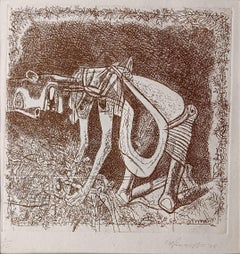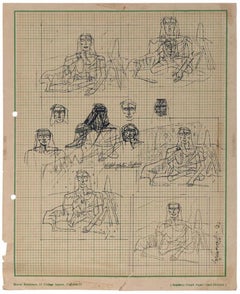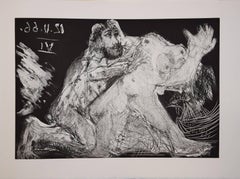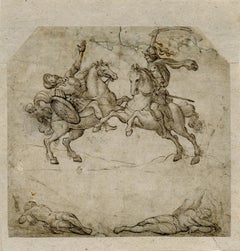Ganesh Pyne Art
Ganesh Pyne was born in Kolkata, West Bengal. During his childhood years, he flipped through Mouchak, a Bengali children's magazine, which his family subscribed to, he came across a printed drawing by Abanindranath Tagore, the founder of Bengal school art movement. This had a deep impact on him, and Pyne started reading avidly and drawing on his black slate with chalk for hours. However, much greater impact was to come in 1946, first, his father died early in the year and his family was caught up in the Calcutta riots, which preceded the partition of India and they had to be escorted to a safe zone at the Calcutta Medical College. This trauma at age nine had a lasting impact on his life and work. Pyne studied at Government College of Art & Craft, an educational institution closely associated with the Bengal School of Art, and graduated in 1959. Pyne has had several exhibitions in India and abroad. Pyne had a documentary film on him, A Painter of Eloquent Silence: Ganesh Pyne directed by Buddhadeb Dasgupta was awarded the National Film Award for the Best Arts Film in 1998. He received “D.Litt…” in 2009 and “Raja Ravi Varma Award” from the Kerala Government & the “Lifetime Achievement Award” by the Indian Chamber of Commerce in 2011.
1980s Modern Ganesh Pyne Art
Paper, Etching
1990s Modern Ganesh Pyne Art
Paper, Ink, Pen
1960s Cubist Ganesh Pyne Art
Drypoint, Etching, Aquatint
16th Century Old Masters Ganesh Pyne Art
Ink, Laid Paper, Pen
1960s Modern Ganesh Pyne Art
Etching
1950s American Modern Ganesh Pyne Art
Paper, India Ink, Watercolor, Pen
1860s Modern Ganesh Pyne Art
Paper, Etching
1950s American Modern Ganesh Pyne Art
Paper, India Ink, Watercolor, Pen
1950s Surrealist Ganesh Pyne Art
Paper, Ink, Watercolor, Pen
21st Century and Contemporary Surrealist Ganesh Pyne Art
Paper, India Ink, Pen, Pencil
1990s Ganesh Pyne Art
Paper, Ink, Watercolor, Pen
1980s Modern Ganesh Pyne Art
Paper, C Print
1970s Modern Ganesh Pyne Art
Ink, Pen
1890s Pre-Raphaelite Ganesh Pyne Art
Paper, Ink, Pen



